Olsens lookout
Khancoban area in Kosciuszko National Park
Learn more
Learn more about why this area is special
Olsens lookout is in Khancoban area. Here are just some of the reasons why this park is special:
Unique landscapes
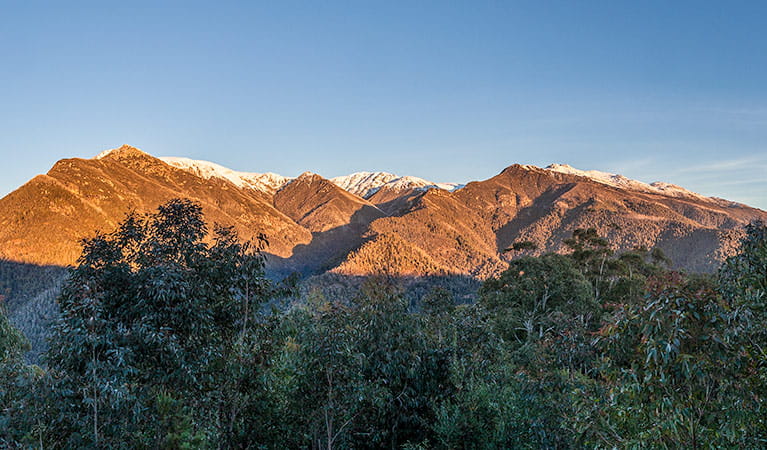
The Western Fall of Kosciuszko National Park’s Main Range is the highest and steepest part of the Snowy Mountains. Mount Townsend and Abbot Peak block the view to Mount Kosciuszko, but their towering, rocky peaks are a breathtaking backdrop to the Geehi Plains, 1600m below. The mountain range captures the westerly air stream allowing tall mountain ash forest to grow in the moist soil below the treeline.
The man-made landscapes of the Snowy Hydro Scheme, one of the civil engineering wonders of the modern world, are also on show. Murray 1 and 2 Power Stations are close to Khancoban, while the scenic drive to Kiandra travels across the very top of the Tumut Pond Reservoir wall.
- Scammells Ridge lookout Scammells Ridge lookout, 1000m above sea level, offers marvellous views of the rugged Western Fall of the Main Range, and makes a scenic picnic spot just off Alpine Way.
Historic alpine huts
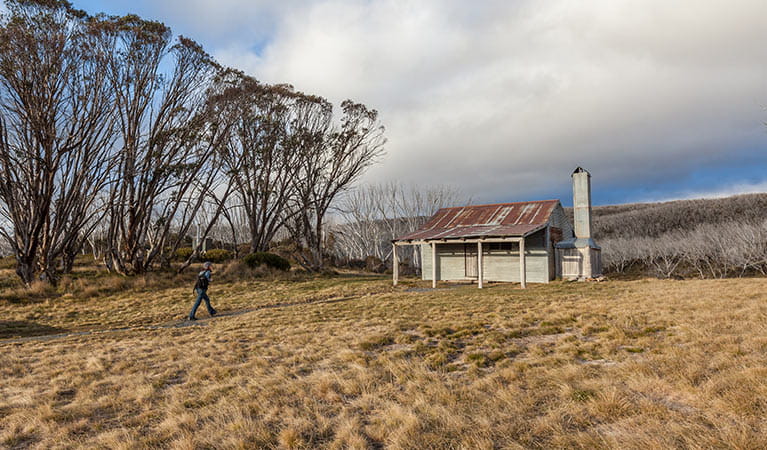
The Khancoban area is home to many of Kosciuszko National Park’s picturesque historic huts. Built as shelter or fishing retreats for graziers and prospectors, or like Major Clews Hut, by Snowy Hydro Scheme workers, the huts provide a window into the past. The 8km return Geehi Huts walk is a great way to see Geehi, Keeble’s and Old Geehi Huts, all constructed from river rocks. Be prepared for several river crossings. Bradleys and O’Brien’s Hut is hard to miss along the Khancoban to Kiandra drive. You can also stretch your legs on a short walk to the rustic Patons Hut or Round Mountain Hut, made out of corrugated iron and surrounded by wilderness.
- Geehi huts walking track Explore Geehi huts walking track by foot, bike, horse or 4WD. This short track, near Khancoban, boasts historic huts, river crossings and magnificent views of the Snowy Mountains in Kosciuszko Nationa...
- National trail: Tom Groggin to Geehi Ride, cycle, or hike 21km of National trail in Kosciuszko National Park. Saddle up your horses for a day of high-country adventure on this epic ride from Tom Groggin to Geehi horse camp.
- Round Mountain Hut walking track Round Mountain Hut walking track winds through the Jagungal Wilderness Area in central Kosciuszko National Park. A great Snowy Mountains walk or ride, it offers view and spring wildflowers on its way ...
Discover western and central Kosciuszko
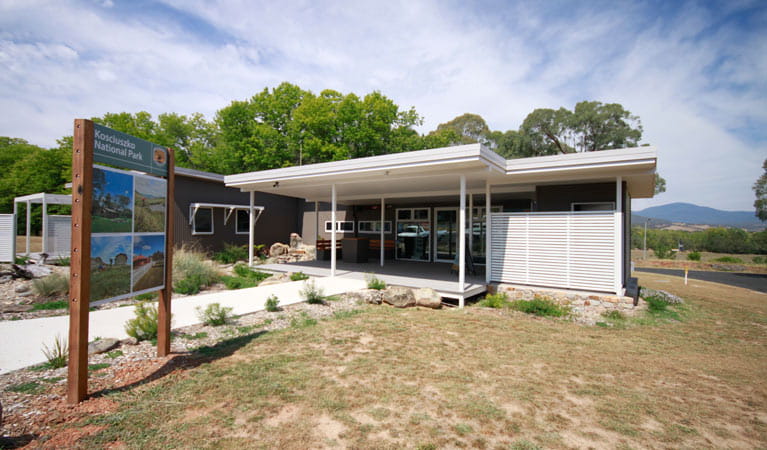
Khancoban Visitor Centre is a convenient stop to buy passes, get maps, information and inspiration before you enter the park. Alpine Way is the main, year-round route through this area. It offers lookouts, campgrounds, picnic areas, walking tracks and bike trails along its 108km length between Khancoban and Jindabyne. The area's upgraded section of the National trail is popular with horse riders, who can also take advantage of horse camps near Geehi and Tom Groggin.
- Khancoban to Kiandra drive Picturesque Khancoban to Kiandra drive links Alpine Way with Snowy Mountains Highway, in Kosciuszko National Park, and takes in scenic dams, historic huts, mountain forest, and the highest town in Aus...
- Khancoban Visitor Centre Khancoban Visitor Centre, on Alpine Way at western entry point to Kosciuszko National Park, is a great place to pick up maps, information and buy a parks pass for your Snowy Mountains adventure.
- Kosciuszko – Alpine Way drive A driving or motorbike tour along Alpine Way scenic drive is a great way to discover the spectacular mountain views, serene campgrounds, magnificent walks, rides, and heritage of southern Kosciuszko N...
- National trail: Tom Groggin to Geehi Ride, cycle, or hike 21km of National trail in Kosciuszko National Park. Saddle up your horses for a day of high-country adventure on this epic ride from Tom Groggin to Geehi horse camp.
Remote wilderness and rare species
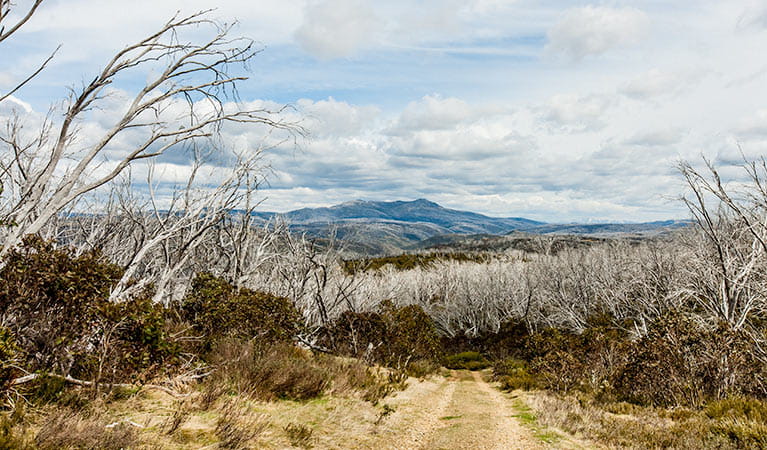
In recognition of Kosciuszko's unique value as a conservation area, it’s been named a UNESCO Biosphere Reserve. More than half of the park, over 350,000ha (almost 865,000 acres), has been declared wilderness, including the Jagungal, Western Fall and Indi wilderness areas, located in the Khancoban area. The park's alpine and sub-alpine areas are home to rare plant species found nowhere else in the world, such as the Southern corroboree frog.
- Round Mountain Hut walking track Round Mountain Hut walking track winds through the Jagungal Wilderness Area in central Kosciuszko National Park. A great Snowy Mountains walk or ride, it offers view and spring wildflowers on its way ...
Plants and animals protected in this park
Animals
-
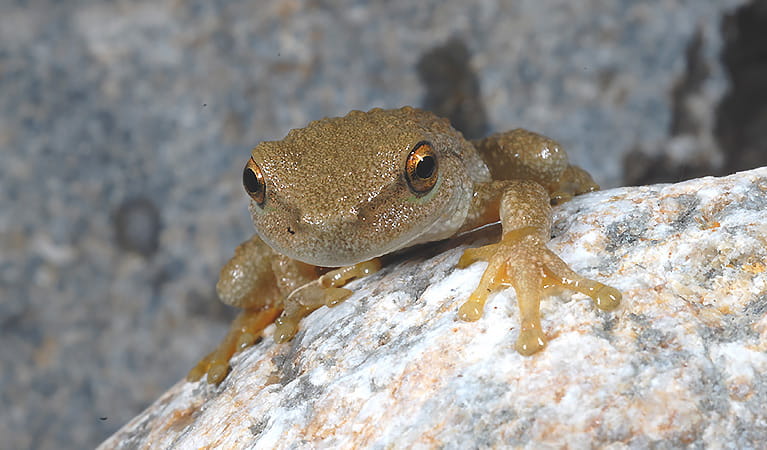
Spotted tree frog (Litoria spenceri)
The spotted tree frog is a rare Australian frog that lives in only a small number of high mountain streams, including a single location in Kosciuszko National Park. It’s listed as critically endangered in NSW.
-

Bare-nosed wombat (Vombatus ursinus)
A large, squat marsupial, the Australian bare-nosed wombat is a burrowing mammal found in coastal forests and mountain ranges across NSW and Victoria. The only other remaining species of wombat in NSW, the endangered southern hairy-nosed wombat, was considered extinct until relatively recently.
-
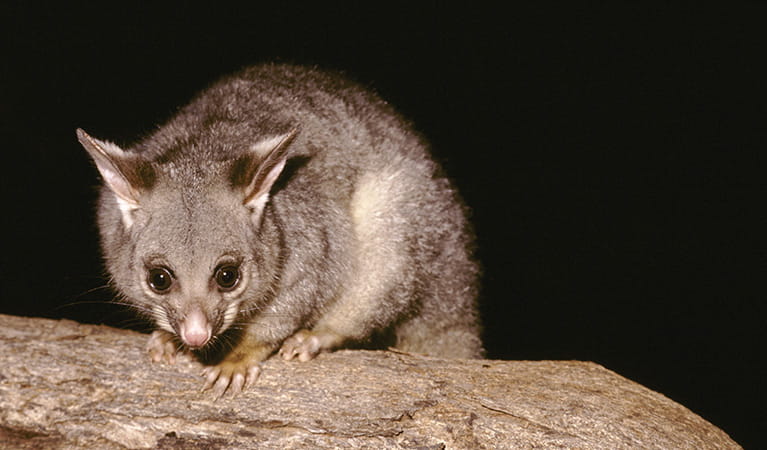
Common brushtail possum (Trichosurus vulpecula)
One of the most widespread of Australian tree-dwelling marsupials, the common brushtail possum is found across most of NSW in woodlands, rainforests and urban areas. With strong claws, a prehensile tail and opposable digits, these native Australian animals are well-adapted for life amongst the trees.
-

Common ringtail possum (Pseudocheirus peregrinus)
Commonly found in forests, woodlands and leafy gardens across eastern NSW, the Australian ringtail possum is a tree-dwelling marsupial. With a powerful tail perfectly adapted to grasp objects, it forages in trees for eucalypt leaves, flowers and fruit.
-
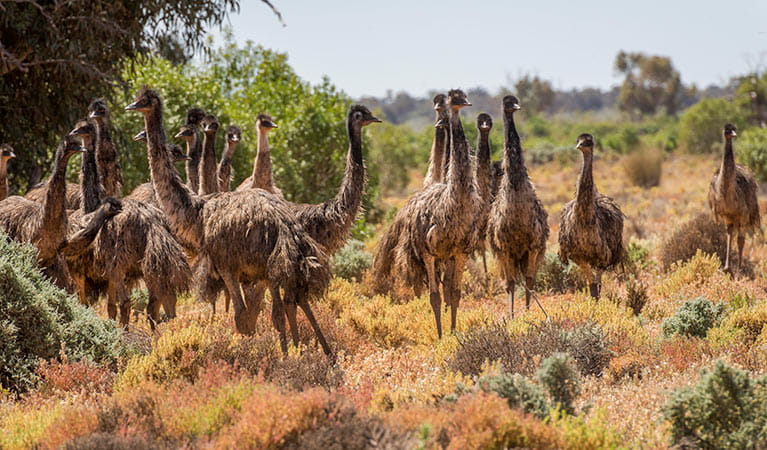
Emu (Dromaius novaehollandiae)
The largest of Australian birds, the emu stands up to 2m high and is the second largest bird in the world, after the ostrich. Emus live in pairs or family groups. The male emu incubates and rears the young, which will stay with the adult emus for up to 2 years.
-
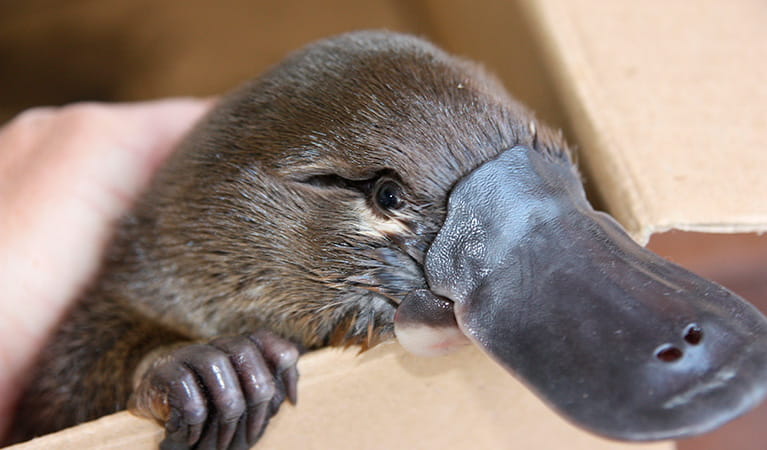
Platypus (Ornithorhynchus anatinus)
One of the most fascinating and unusual Australian animals, the duck-billed platypus, along with the echidna, are the only known monotremes, or egg-laying mammals, in existence. The platypus is generally found in permanent river systems and lakes in southern and eastern NSW and east and west of the Great Dividing Range.
-
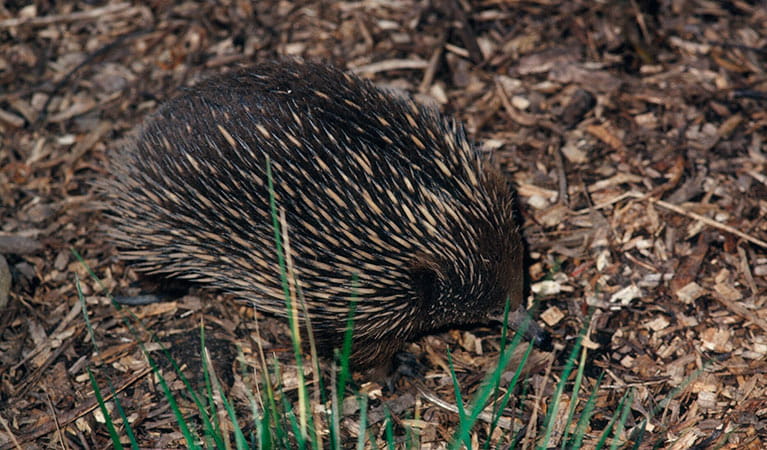
Short-beaked echidna (Tachyglossus aculeatus)
One of only 2 egg-laying mammals in the world, the short-beaked echidna is one of the most widespread of Australian native animals. Covered in spines, or quills, they’re equipped with a keen sense of smell and a tube-like snout which they use to break apart termite mounds in search of ants.
-

Superb lyrebird (Menura novaehollandiae)
With a complex mimicking call and an elaborate courtship dance to match, the superb lyrebird is one of the most spectacular Australian animals. A bird watching must-see, the superb lyrebird can be found in rainforests and wet woodlands across eastern NSW and Victoria.
-

Swamp wallaby (Wallabia bicolor)
The swamp wallaby, also known as the black wallaby or black pademelon, lives in the dense understorey of rainforests, woodlands and dry sclerophyll forest along eastern Australia. This unique Australian macropod has a dark black-grey coat with a distinctive light-coloured cheek stripe.
Plants
-
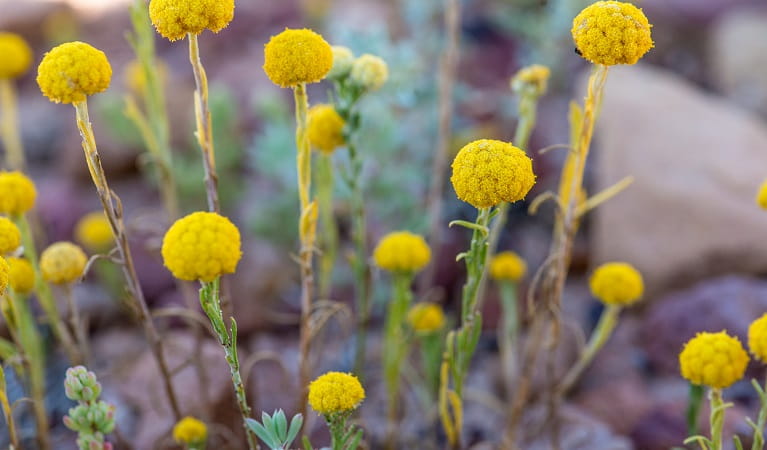
Billy buttons (Craspedia spp. )
Billy buttons are attractive Australian native plants that are widespread throughout eastern NSW in dry forest, grassland and alpine regions such as Kosciuszko National Park. The golden-yellow globe-shaped flowers are also known as woollyheads. Related to the daisy, billy buttons are an erect herb growing to a height of 50cm.
Look out for...
Billy buttons
Craspedia spp.
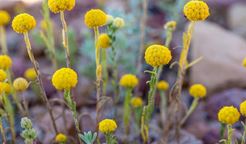
Billy buttons are attractive Australian native plants that are widespread throughout eastern NSW in dry forest, grassland and alpine regions such as Kosciuszko National Park. The golden-yellow globe-shaped flowers are also known as woollyheads. Related to the daisy, billy buttons are an erect herb growing to a height of 50cm.